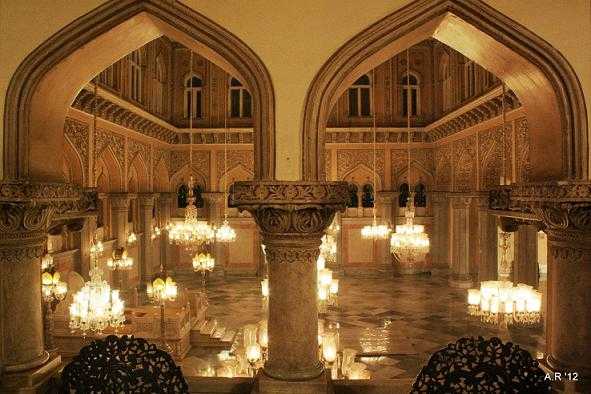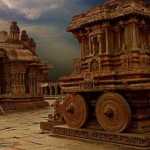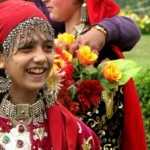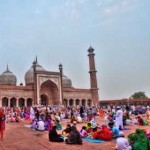The 11th Conference of Parties to the Convention of Biological Diversity has seen the host city Hyderabad get a facelift. Overnight, roads have been paved, widened and marked. Sculptures seem to have grown from the earth and colours of green, blue and yellow have merged themselves into artistic outlets to mask the graffiti alongside the pillars and walls of flyovers.
The laymen walk by giant hoardings which call out to the public to stop the killing of sparrows and ongole bulls. To me the best part of the facelift are the lights, extended hours and the beefed up security in heritage monuments in the old city of Hyderabad, particularly the Chowmallah Palace. But then maybe I am biased towards my favourite heritage monument in all of Hyderabad.
The very first time I entered the palace complex I knew without a shadow of doubt that I would be coming here again and again.
Not many people realize it but this palace marks the genesis of the reign of the Nizams. The first nizam, on declaring his independence from the Mughals upon the death of the Aurangazeb, ventured down to the Deccan and chose Hyderabad as the seat of his throne. He initiated the construction of the Chowmallah Palace. Seven generations have held their court here hence.
I have never seen Chowmallah Palace after sundown. This is my first visit after dusk. The palace looks regal, lit up with yellow lights. Men dressed as guards and holding spears from the palace collection, and little girls doing Kuchipudi by the palace entrance seem like a page out of the Palace’s rich heritage.
To me, the Palace is not just about the architecture and the history; it gets a little more personal.
My visit to Hyderabad was not a planned one. Hyderabad just happened to me. Long before my flight touched down I was prioritising my exit strategies. Three years later I find myself walking into the darbar hall of the Chowmallah.
Inside, the darbar hall has thirteen imposing chandeliers arranged in three rows of 3, 7 and 3. The light from the many small bulbs leave small circles of yellow reflection on the polished marble floor. I can only imagine the pains and the days taken to dust the chandeliers.
The Palace does not come under the umbrella of the ASI, it is maintained by an independent trust.
After India gained independence the Nizam’s assets were frozen and later they were tied up in colossal inheritance tussle. Sadly a lot of the wealth was pilfered, while others just rotted away.
The conservation team have restored countless artefacts and have recreated, through the exhibits, the tasteful affluence that was once synonymous with the life at the palace.
I can never tire of viewing the photographs on exhibit. They speak to me. Groups of women in uncomfortable clothing and metal loops hanging from their thin earlobes tell me about life in the harem; they pour out their woes on just being one more of the nizam’s wives. Although I may never know what it is to be in their position, I do know the feeling of being lost in a new city, friendless and alone.
The royal children huddle together in a chair, sons and daughters together. The girls are smiling, maybe they already know that once they grow older only the sons will be photographed and talked about. No one remembers the Nizam’s daughters.
I take my time from photograph to photograph. Around me, people pass by rows of photographs in one brisk motion, pausing only to take pictures. They pass by without a secondary glance, oblivious to the stories frozen in time. They walk by blindly, failing to see the fashion of the palace change with the onset of Turkish blood. When the sons of the 5th Nizam married Turkey’s last Caliph’s daughter and his niece there is a change in the clothing from conventional Indian to European attire. Did they comprehend that the 6th Nizam was keen on equestrian or did they see the 7th nizam growing up, his shy adolescent hunch gradually replaced by a confident pose?
When I reach the part where the last Nizam marries Princess Esra, I have a nostalgic feeling. Her eyes speak volumes. She is a happy young bride, smiling for the camera at exotic studios in London, Paris and Nice. Through the years, her smile seems more forced; at times she hardly smiles. She has a very serious face in one on the state dinners in which Pandit Jawaharlal Nehru is a guest. Did she not like Nehru’s mentorship of her husband, or was she just tired that day? In another state function her aloofness from her husband is clearly visible in the body language. Maybe the divorce never came as a surprise to either of them.
I reach the end of the display and stop by the most recent photograph. It was taken on the day the Chowmallah palace was officially opened to the public. Princess Esra stands with her children and her mother-in-law.
Her eyes radiates the strength of the woman who set into motion the largest and the most expensive conversation project in India - to restore the Chowmallah palace to its former glory.
It always leaves me awe stricken to wonder that if Princess Esra had not cared enough for this heritage monument, I would never have found my sweet haven in Hyderabad. I shudder at the thought that all those hours spent in the palace grounds with a book and sandwiches may never have come to be.
I have brought all my friends here. Even if they were visiting for just a day, a visit to the Chowmallah Palace was always on the cards. In fact I brought my fiance here long before he made his way to my list of favourite people. At times I tease him that the fact he liked Chowmallah palace was what sealed the deal!
I walk out of the lit up room, leaving behind me generations of history trapped in rows of photographs. Outside there is a nip in the air. The dances are all done for the evening and the dancers make their way to the makeshift changing rooms their anklets drowning out the cooing of restless pigeons flying from one minaret of the palace to another. The pigeons must be annoyed at the unusual disturbance during their roosting time.
I sit by the steps leading to the courtyard waiting for my photographer friend. A feather from a flying pigeon gradually floats down, obeying the call of gravity in it’s own stride. A chill breeze blows gently and I gather my duppata around me. Watching the feather being tossed about by the wind I am hit by a pang of sadness.I tell no one in particular “If I told you that it pains my heart to know that I will have to leave all this behind in a couple of months,would you understand?”
—
























really a nice post.. very informative with a strong pulling-the-crowd effect in it….